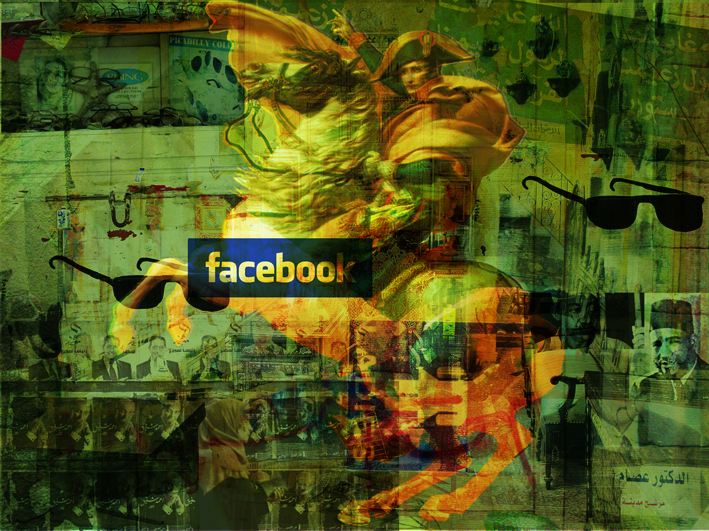Artwork by Taha Hazem Hussein, courtesy of "View From Inside."
Contemporary Arab Photography, Video and Mixed Media Art: View From Inside
By Karin Adrian von Roques
Schilt Publishing, Amsterdam, NL, 2014
The beautiful and visually powerful book “Contemporary Arab Photography, Video and Mixed Media Art: View From Inside” features a selection of photography, video, and mixed-media art created by 49 Arab artists from thirteen different countries. These include Bahrain, Egypt, Iraq, Lebanon, Morocco, Oman, Palestine, Qatar, Saudi Arabia, Syria, the United Arab Emirates, and Yemen. The heightened interest shown by the Western world for the art of the Arab and Islamic worlds, as well as the rise of galleries catering to this interest, inspired the production of this book. Its publication coincided with an exhibition of the artwork featured within its pages.
Offering several introductory articles as well as a multitude of colorful photographs showcasing the diverse talents of leading artists from around the Arab world, this colorful book give voices to individuals who would otherwise remain unheard. Not only does the artwork depict the powerful connections between these artists, who continue to work and live in the Middle East, but it also speaks to individual experiences, thereby challenging dominant paradigms of dismissing diversity through othering the Arab culture into one homogeneous whole. This book gives voice to a generation of artists who came of age during the expansion of satellite television, digital technology, and the Internet in the Arab world, and we see the multitude of ways that technology has influenced art.
We also see their multifaceted responses to the reality of globalism as well as current uprisings against dictatorship. Syrian artist Tammam Azzam’s piece, entitled “Goya’s The Third of May 1808,”interweaves a photograph of current destruction with an image from Goya’s painting as a way to symbolize how Syrian culture and art is in the process of destruction while the art and culture of the West lives on. “Refugee,” his image of a fly in a yellow sky above tents, proves remarkably potent. Egyptian artist Hazem Taha Hussein’s series “Facebook-Napeolon @ 2011”and “Mask of Revolution,” (2012-2013), bring the Egyptian uprising alive. These images and others serve to remind us that this art book forms part of a historical archive of how artists have addressed current tragedies and imparted their own perspectives and humanistic messages.
This article appeared in Al Jadid Magazine, Vol. 19, No. 68, 2015.
Copyright © 2015 AL JADID MAGAZINE

